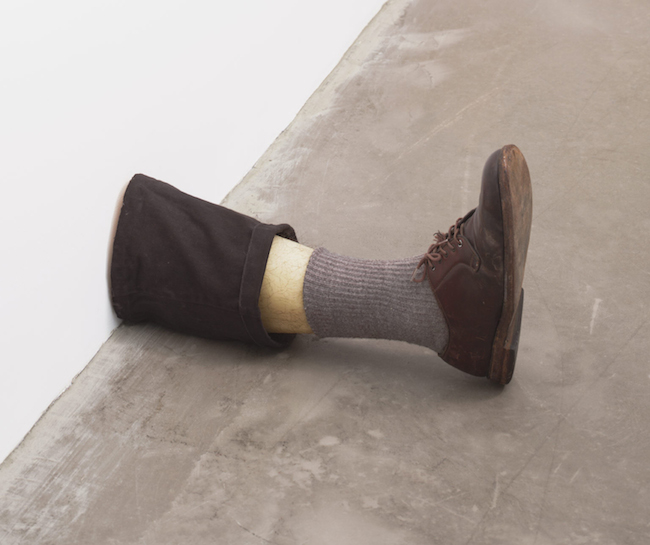
Robert Gober. Untitled Leg, 1989-90. Beeswax, cotton, wood, leather, human hair; 11 3/8 x 7 3/4 x 20 inches. Collection: Museum of Modern Art, New York.
“Our arts venues scare people or make them feel stupid or small,” writes filmmaker Mark Cousins (The Story of Film), decrying the middle-class values that determine the design of these spaces and “deprive them of passion, brio, instinct—and noise.” He adds: “We are missing so much by not nicking the best ideas from working-class culture—the texture, the glow—and adding it to how our arts venues work. I am delighted to live in the cultureverse, but it needs to be a multi- not uni-verse.”
- Noting that animism has been the theme of several recent exhibitions, New Museum curator Lauren Cornell interviews four artists—Mark Leckey, Jacolby Satterwhite, John Kelsey, and Katja Novitskova—about their work’s relationship to the non-human world, specifically ideas around technology and mysticism.
- “I think the benefit of a Catholic childhood is your belief in visual symbols as transmitters of information and clues about life, whether it’s the mystery of life or life in general,” says Robert Gober, whose MoMA survey opens October 4. “You grow up trying to interpret, worshipping, visual symbols. It’s a body-soaked imagery that you’re looking at.”
- “It’s not about youth. It’s about artists who happen to be young at this time.” While hesitant to generalize about work made by artists born after 1989, 89Plus co-curators Hans Ulrich Obrist and Simon Castets are noticing some trends in art submitted to their site, from the blurring line between the virtual and the actual to shared concerns about politics and the environment.
- The selfie craze and copyright law converged in an odd case last week: photographer David Slater‘s requests to Wikipedia to remove his most famous work—a monkey’s self-portrait—have been rejected. Wikipedia says the picture-taking primate, not the camera’s owner, holds the copyright. That’s not true, says Sarah Jeong: US copyright law states that the work is uncopyrightable, because animals can’t hold copyrights.
- Claiming a mural commissioned by Theaster Gates’ Arts and Public Life initiative “brought on a harsh feeling,” a Chicago resident group complained enough to have the piece—which covered an abandoned muffler shop’s wall—removed, just weeks after its completion. The piece was created by twelve artists from the Montreal collaborative En Masse.
- “I have the naïve idea that art can change reality,” said Tania Bruguera, at a talk held in conjunction with the Guggenheim exhibition Under the Same Sun: Art from Latin America Today. “It’s very rare, but I’ve seen it happen. As an artist, you need to have a lot of patience, and a sense of how long it takes for real change to happen.” An example of such patience: her Immigrant Movement International was begun in 2011 and is expected to conclude next year.
- Placemaking, a movement still in its infancy in Milwaukee, has critic Mary Louise Schumacher hopeful yet questioning. She wonders “if such art projects are used to make the city appear as if it is doing something about the pressing problems of racial and economic inequality because it doesn’t have much of a plan otherwise. Can we really erase a generation of redlining certain communities with a little art?”
Follow Art News From Elsewhere on the Walker Art Center homepage or via @walkermag, the Walker’s editorial-focused Twitter feed.



